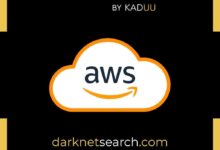AWS CDK: 7 Powerful Reasons to Master Infrastructure as Code
Imagine writing your cloud infrastructure like you write your app—using real code. That’s the magic of AWS CDK, where infrastructure becomes predictable, reusable, and version-controlled.
What Is AWS CDK and Why It’s a Game-Changer

The AWS Cloud Development Kit (CDK) is an open-source software development framework that allows developers to define cloud infrastructure in familiar programming languages such as TypeScript, Python, Java, C#, and Go. Unlike traditional infrastructure-as-code tools that rely on declarative configuration files (like JSON or YAML), AWS CDK uses imperative code to model AWS resources, making it easier to build, test, and deploy cloud architectures programmatically.
How AWS CDK Differs from CloudFormation and Terraform
While AWS CloudFormation and Terraform are declarative tools—meaning you describe the desired state of your infrastructure—AWS CDK is imperative. You write code that generates CloudFormation templates under the hood. This means you can use loops, conditionals, functions, and classes to build reusable infrastructure components.
For example, instead of manually writing repetitive JSON blocks for multiple EC2 instances, you can write a function that spins up instances based on parameters. This brings software engineering best practices—like modularity and abstraction—into infrastructure management.
- AWS CDK compiles down to AWS CloudFormation for deployment
- Supports high-level constructs (L3) and low-level CloudFormation resources (L1)
- Enables logic, reuse, and testing in infrastructure code
“With AWS CDK, infrastructure is no longer a side effect of development—it’s part of the application lifecycle.” — AWS Developer Guide
Supported Programming Languages and SDKs
One of the biggest advantages of aws cdk is its support for mainstream programming languages. Developers don’t need to learn a new domain-specific language (DSL) like HCL (used by Terraform) or YAML syntax. Instead, they use languages they already know:
- TypeScript (most mature and widely used)
- Python (popular in data and DevOps workflows)
- Java (enterprise-grade applications)
- C# (.NET ecosystem)
- Go (growing support, ideal for performance-critical tools)
This lowers the learning curve and enables better integration with CI/CD pipelines, testing frameworks, and IDEs. You get autocomplete, type checking, and debugging—features absent in YAML-based tools.
Core Concepts of AWS CDK: Stacks, Constructs, and Apps
To effectively use AWS CDK, you must understand its foundational building blocks: apps, stacks, and constructs. These abstractions allow you to organize and manage infrastructure at different levels of complexity.
Understanding Stacks and Their Role in Deployment
A stack in aws cdk is the fundamental unit of deployment. It maps directly to an AWS CloudFormation stack. Each stack represents a collection of AWS resources that are provisioned and updated as a single unit. For example, you might have a NetworkingStack for VPCs and subnets, and a DatabaseStack for RDS instances.
Stacks help enforce separation of concerns and enable independent deployments. You can deploy a single stack without affecting others, which is crucial for microservices architectures and team-based development.
- Each stack generates its own CloudFormation template
- Stacks can depend on each other (e.g., API stack depends on VPC stack)
- Stack boundaries should align with operational ownership and lifecycle
Deep Dive into Constructs: L1, L2, and L3
Constructs are the core building blocks of AWS CDK. They are reusable, composable components that encapsulate AWS resources. There are three levels of constructs:
- L1 (Cfn*) Constructs: Low-level, 1:1 mappings to CloudFormation resources. Named with the prefix
Cfn, likeCfnBucket. They offer full control but require more manual configuration. - L2 Constructs: Higher-level, opinionated abstractions that include sensible defaults and safety checks. For example,
s3.Bucketcreates an S3 bucket with encryption enabled by default. - L3 (Pattern) Constructs: Pre-built solutions for common architectures, such as
ApplicationLoadBalancedFargateServiceorServerlessCluster. These are often found in the AWS Solutions Constructs library.
Using higher-level constructs speeds up development and reduces errors by enforcing best practices.
“Constructs are to CDK what components are to React—reusable, testable, and composable.”
Setting Up Your First AWS CDK Project
Getting started with aws cdk is straightforward if you have Node.js and AWS CLI configured. The CDK CLI provides commands to initialize, synthesize, deploy, and destroy infrastructure.
Installation and Environment Setup
To install AWS CDK, you need Node.js (v14 or later) and npm. Run the following command globally:
npm install -g aws-cdkThen, configure your AWS credentials using the AWS CLI:
aws configureEnsure your IAM user has sufficient permissions (e.g., AdministratorAccess for learning, or least-privilege roles in production).
Next, initialize a new CDK project:
cdk init app --language pythonThis creates a boilerplate project with directories, configuration files, and a sample stack.
- Source code goes in
lib/(orsrc/) - Tests are in
test/ cdk.jsondefines how to run the app
Initializing a New CDK App and Deploying a Sample Stack
After initialization, you’ll see a default stack class. Let’s create a simple S3 bucket using the L2 construct:
import * as s3 from 'aws-cdk-lib/aws-s3';
import { Stack, StackProps } from 'aws-cdk-lib';
import { Construct } from 'constructs';
class MyFirstStack extends Stack {
constructor(scope: Construct, id: string, props?: StackProps) {
super(scope, id, props);
new s3.Bucket(this, 'MyFirstBucket', {
versioned: true,
encryption: s3.BucketEncryption.S3_MANAGED
});
}
}To deploy:
cdk synth– Generates the CloudFormation templatecdk diff– Shows changes before deploymentcdk deploy– Deploys the stack to AWS
Within minutes, your S3 bucket is live in your AWS account.
Real-World Use Cases of AWS CDK
aws cdk shines in complex, repeatable environments. It’s not just for startups—it’s used by enterprises to manage thousands of resources across multiple accounts and regions.
Building Serverless Applications with API Gateway and Lambda
Serverless architectures are a perfect fit for CDK. You can define Lambda functions, API Gateway endpoints, DynamoDB tables, and event sources—all in code.
Example: Create a REST API that triggers a Lambda function on HTTP requests.
import * as lambda from 'aws-cdk-lib/aws-lambda';
import * as apigw from 'aws-cdk-lib/aws-apigateway';
const handler = new lambda.Function(this, 'HelloHandler', {
runtime: lambda.Runtime.NODEJS_18_X,
code: lambda.Code.fromAsset('lambda'),
handler: 'hello.handler'
});
new apigw.LambdaRestApi(this, 'Endpoint', {
handler: handler
});This approach enables rapid iteration, local testing, and automated deployments via CI/CD.
Provisioning Multi-Account AWS Environments
For organizations using AWS Organizations, CDK supports deploying stacks across multiple accounts and regions using environments. Define environments in your app:
const devEnv = { account: '111111111111', region: 'us-east-1' };
const prodEnv = { account: '222222222222', region: 'us-west-2' };
new MyApplicationStack(app, 'dev-stack', { env: devEnv });
new MyApplicationStack(app, 'prod-stack', { env: prodEnv });CDK uses AWS CloudFormation StackSets or custom deployment pipelines to manage cross-account deployments securely.
- Enables consistent governance across accounts
- Supports blue/green and canary deployments
- Integrates with AWS Control Tower for landing zones
Best Practices for AWS CDK Development
To get the most out of aws cdk, follow engineering best practices that improve maintainability, security, and performance.
Writing Reusable and Modular Constructs
Create custom constructs for common patterns in your organization. For example, a SecureS3Bucket construct that enforces encryption, logging, and access controls.
export class SecureS3Bucket extends Construct {
public readonly bucket: s3.Bucket;
constructor(scope: Construct, id: string, props?: SecureS3BucketProps) {
super(scope, id);
this.bucket = new s3.Bucket(this, 'Bucket', {
encryption: s3.BucketEncryption.S3_MANAGED,
blockPublicAccess: s3.BlockPublicAccess.BLOCK_ALL,
versioned: true,
...props
});
}
}These constructs can be published as npm packages and shared across teams.
Implementing CI/CD Pipelines with AWS CodePipeline
CDK integrates seamlessly with AWS CodePipeline, CodeBuild, and CodeDeploy. You can define your entire CI/CD pipeline in CDK using the pipelines module.
import { CdkPipeline, SimpleSynthAction } from 'aws-cdk-lib/pipelines';
const pipeline = new CdkPipeline(this, 'Pipeline', {
pipelineName: 'MyAppPipeline',
synthAction: SimpleSynthAction.standardNpmSynth({
sourceArtifact,
buildCommand: 'npm run build'
})
});
pipeline.addApplicationStage(new MyApplicationStage(this, 'Prod', { env: prodEnv }));This “pipeline-in-code” approach ensures that your deployment process is version-controlled and auditable.
“If your infrastructure isn’t in version control, it doesn’t exist.” — DevOps Principle
Advanced Features: Custom Constructs and CDKTF Integration
As teams mature in their use of aws cdk, they often build custom libraries and integrate with other tools for hybrid cloud scenarios.
Creating and Sharing Custom Constructs
Custom constructs can be published to public or private package registries (npm, PyPI, etc.). This enables:
- Standardization across teams
- Enforcement of security policies
- Reduced duplication and faster onboarding
Use cdk init lib --language typescript to start a construct library project. Include unit tests using Jest and snapshot testing to ensure generated templates don’t change unexpectedly.
Example test:
expect(stack).toHaveResource('AWS::S3::Bucket', {
BucketEncryption: {
ServerSideEncryptionConfiguration: [{
ServerSideEncryptionByDefault: {
SSEAlgorithm: 'aws:kms'
}
}]
}
});Using CDK for Terraform (CDKTF) for Multi-Cloud Deployments
While aws cdk is AWS-native, HashiCorp’s Terraform supports multi-cloud. CDK for Terraform (CDKTF) bridges this gap by allowing you to write Terraform configurations using programming languages.
With CDKTF, you can manage AWS, Azure, GCP, and other providers using TypeScript or Python, while still benefiting from CDK’s developer experience.
Learn more at the official CDKTF documentation.
Troubleshooting and Common Pitfalls in AWS CDK
Even experienced developers face challenges when adopting aws cdk. Knowing common issues helps you avoid costly mistakes.
Handling State and Synth Artifacts
The cdk synth command generates CloudFormation templates in the cdk.out directory. This folder should be:
- Excluded from version control (add to
.gitignore) - Cleaned regularly using
cdk destroyor manual deletion - Used for auditing generated templates before deployment
Never edit generated templates manually—they will be overwritten on next synth.
Debugging Deployment Failures
When a deployment fails:
- Run
cdk diffto see what’s changing - Check CloudFormation events in the AWS Console
- Use
cdk deploy --verbosefor detailed logs - Validate IAM permissions—most failures are due to insufficient access
Use the cdk doctor command to diagnose environment issues.
“The best way to debug infrastructure is to make it predictable and testable.”
Future of AWS CDK: Trends and Roadmap
AWS continues to invest heavily in CDK, expanding its capabilities and ecosystem.
CDK v2: Unified Module and Simplified Experience
CDK v2 merged all language modules into a single package (aws-cdk-lib), reducing dependency hell and version conflicts. It’s now the recommended version for all new projects.
- Fewer packages to manage
- Better backward compatibility
- Improved performance and bundling
Migrate from v1 using the official migration guide.
Emerging Trends: CDK for Kubernetes (CDK8s)
CDK8s allows you to define Kubernetes manifests using familiar programming languages. It’s not tied to AWS and works with any Kubernetes cluster.
Define Helm-like charts programmatically and generate YAML for kubectl or ArgoCD.
Explore CDK8s at cdk8s.io.
What is AWS CDK used for?
AWS CDK is used to define and deploy cloud infrastructure using familiar programming languages. It’s ideal for building serverless apps, VPCs, CI/CD pipelines, and multi-account AWS environments with reusable, testable code.
Is AWS CDK better than Terraform?
It depends on your needs. AWS CDK is better for AWS-centric teams already using JavaScript/Python. Terraform is better for multi-cloud environments. CDK offers richer programming capabilities; Terraform has broader provider support.
Can I use AWS CDK with existing CloudFormation templates?
Yes. You can import existing CloudFormation templates into CDK using the CfnInclude construct from the aws-cdk-lib/cloudformation-include module, allowing gradual migration.
How do I secure AWS CDK deployments?
Use least-privilege IAM roles, enable CloudTrail logging, scan code for secrets, and use parameter store or Secrets Manager for credentials. Avoid hardcoding sensitive data.
Does AWS CDK cost money?
No. AWS CDK is free and open-source. You only pay for the AWS resources you provision, not the CDK tooling itself.
Mastering aws cdk transforms how you think about infrastructure. It brings the power of software development to cloud provisioning—enabling speed, safety, and scalability. Whether you’re building a simple website or a global enterprise platform, CDK provides the tools to do it right. Start small, iterate fast, and let your infrastructure grow as code.
Recommended for you 👇
Further Reading:









